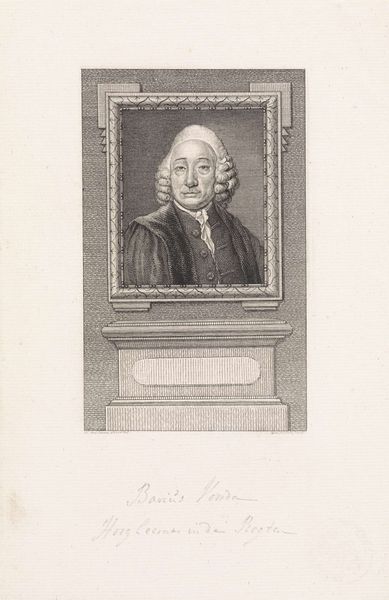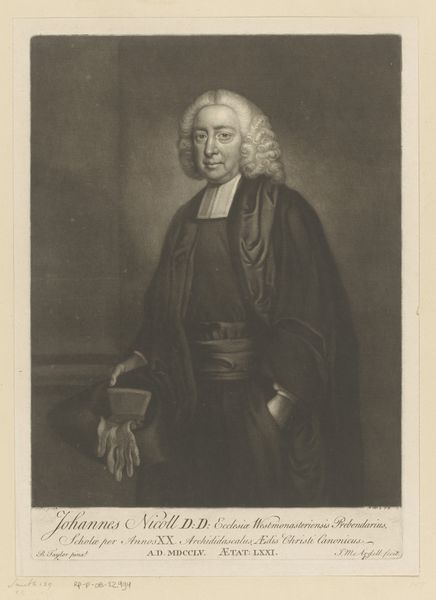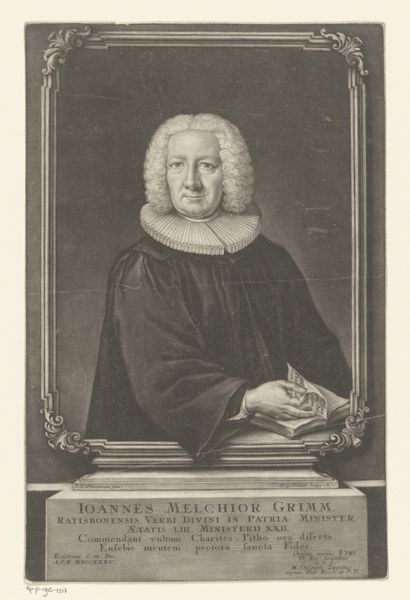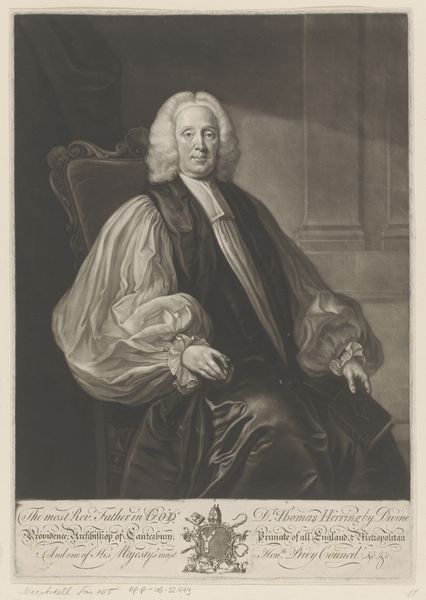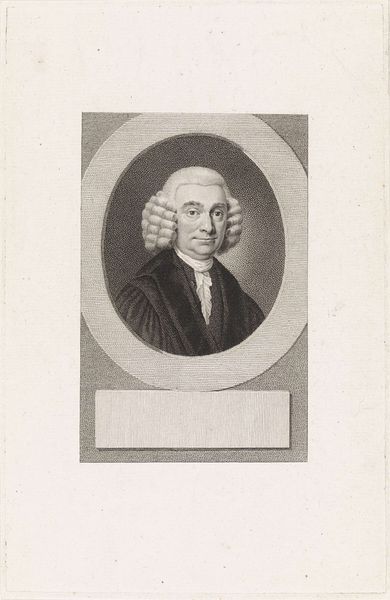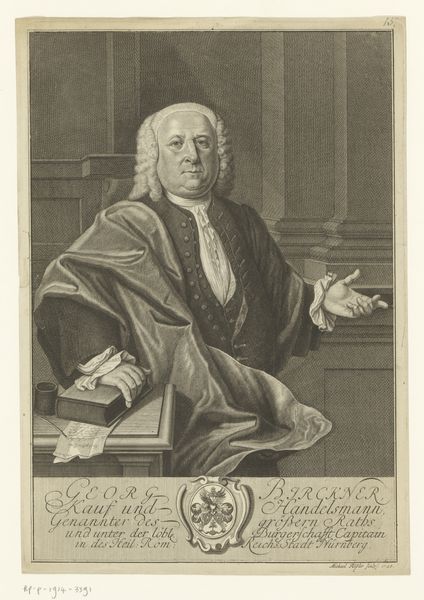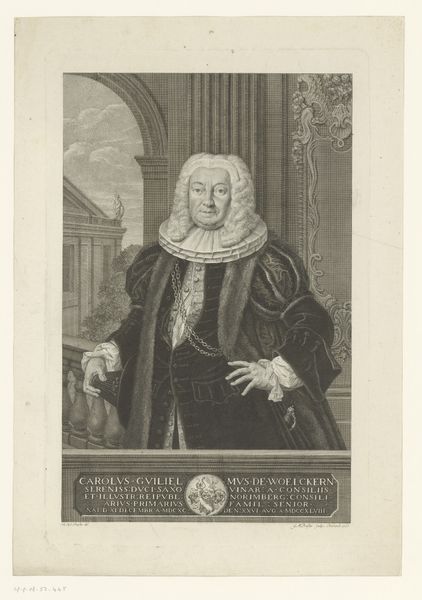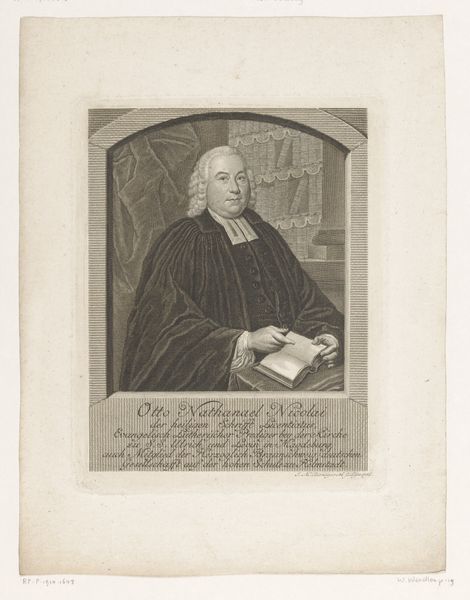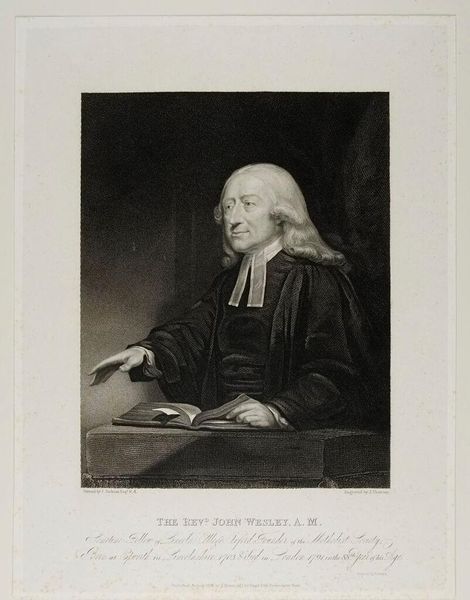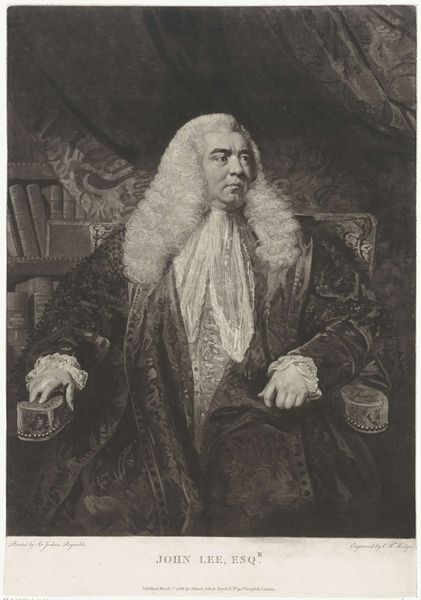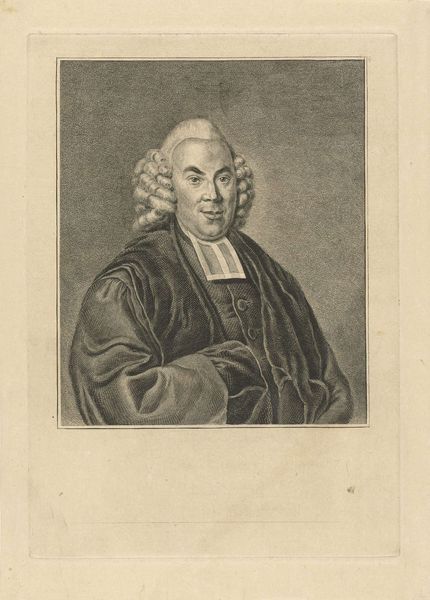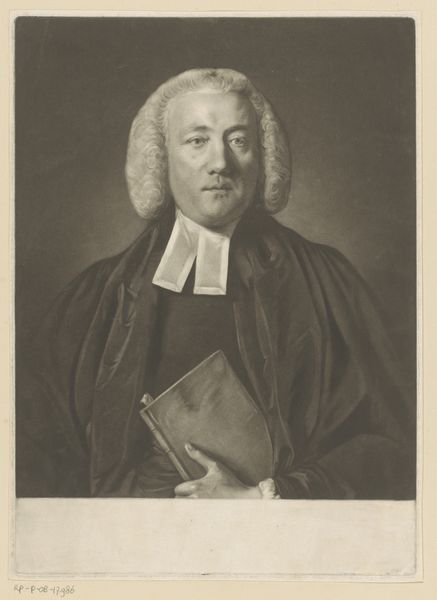
print, engraving
#
portrait
# print
#
pencil sketch
#
old engraving style
#
classical-realism
#
pencil drawing
#
history-painting
#
academic-art
#
engraving
Dimensions: height 217 mm, width 156 mm
Copyright: Rijks Museum: Open Domain
Editor: Here we have the "Portrait of Bavius Voorda," an engraving dating back to 1792 by Theodoor Koning, housed at the Rijksmuseum. There’s something both austere and intriguing about it – a somber feeling that seems characteristic of that era's portraiture. How do you interpret this work? Curator: It's interesting you pick up on the somber feeling. These portraits, particularly engravings like this one, often served as tools for constructing public identity. Think about the power structures at play. Who was Voorda, and what was Koning trying to convey about him to the Dutch public? Editor: I see… So it’s less about a personal representation and more about projecting a specific image for society? Curator: Exactly. The medium itself, engraving, allows for mass distribution. It's a public declaration of status and perhaps political leanings, carefully crafted for consumption by a wider audience. Notice his attire – the robe, the wig. What do they suggest about Voorda’s position? Editor: It speaks to someone of considerable authority. Legal or academic, perhaps? Curator: Precisely. And the text beneath reinforces this. It situates him within the intellectual circles of Holland, connected to “Pallas Orden,” hinting at an affiliation with enlightenment ideals. Consider the role of art in shaping national identity at the time. These portraits were instrumental in forging a sense of shared values and collective history. Editor: I hadn't considered the political weight a simple portrait could carry. Curator: It's a window into the visual politics of the late 18th century. How images contributed to the construction of power, and how individuals navigated the public sphere through representation. Editor: I'll definitely view portraits differently from now on! Seeing it as part of the era's social and political narrative is eye-opening. Curator: Precisely. The politics of imagery! I'm glad you found this perspective helpful.
Comments
No comments
Be the first to comment and join the conversation on the ultimate creative platform.
